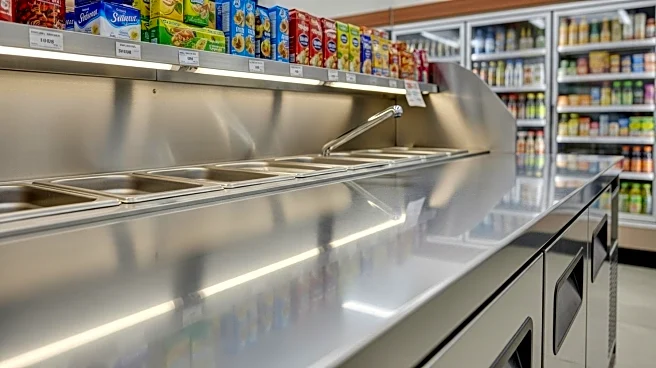What's Happening?
Retailers are increasingly adopting digital wallets and embedded finance solutions to improve customer experience and differentiate their brands in a competitive market. These technologies, such as Apple Pay and Google Pay, have become standard expectations for consumers due to their convenience, speed, and security. Embedded finance options, including buy-now-pay-later (BNPL) and installment payments, are being integrated into customer loyalty programs and marketing strategies to enhance flexibility and reduce cart abandonment. Retailers are focusing on creating seamless payment experiences that empower customers and foster brand loyalty.
Why It's Important?
The integration of digital wallets and embedded finance is crucial for retailers aiming to capture and retain customers in a saturated market. These technologies offer a competitive edge by providing faster, safer, and more personalized payment experiences. As consumer expectations rise, particularly among younger and digital-native demographics, retailers that fail to offer frictionless checkout experiences risk losing sales and loyal customers. By leveraging these payment innovations, retailers can enhance customer engagement, increase conversion rates, and build stronger brand loyalty, ultimately driving revenue growth.
What's Next?
Retailers are expected to continue expanding their use of digital wallets and embedded finance solutions, focusing on integrating these technologies across the entire customer journey. This includes linking payment methods to loyalty programs and promotions, thereby transforming the checkout process into a key emotional touchpoint. As the market evolves, retailers will need to ensure their payment platforms are flexible, secure, and compliant with regulations to maintain customer trust and satisfaction. The ongoing development of these technologies will likely lead to further innovations in customer experience and payment strategies.
Beyond the Headlines
The shift towards digital wallets and embedded finance reflects broader trends in consumer behavior and technology adoption. As these payment methods become more ingrained in everyday transactions, they may influence the future of retail by shaping how brands interact with customers and manage loyalty programs. Additionally, the emphasis on seamless payment experiences highlights the growing importance of user experience design and data integration in retail operations. This evolution may also prompt discussions around data privacy and security, as retailers navigate the balance between personalization and consumer protection.










